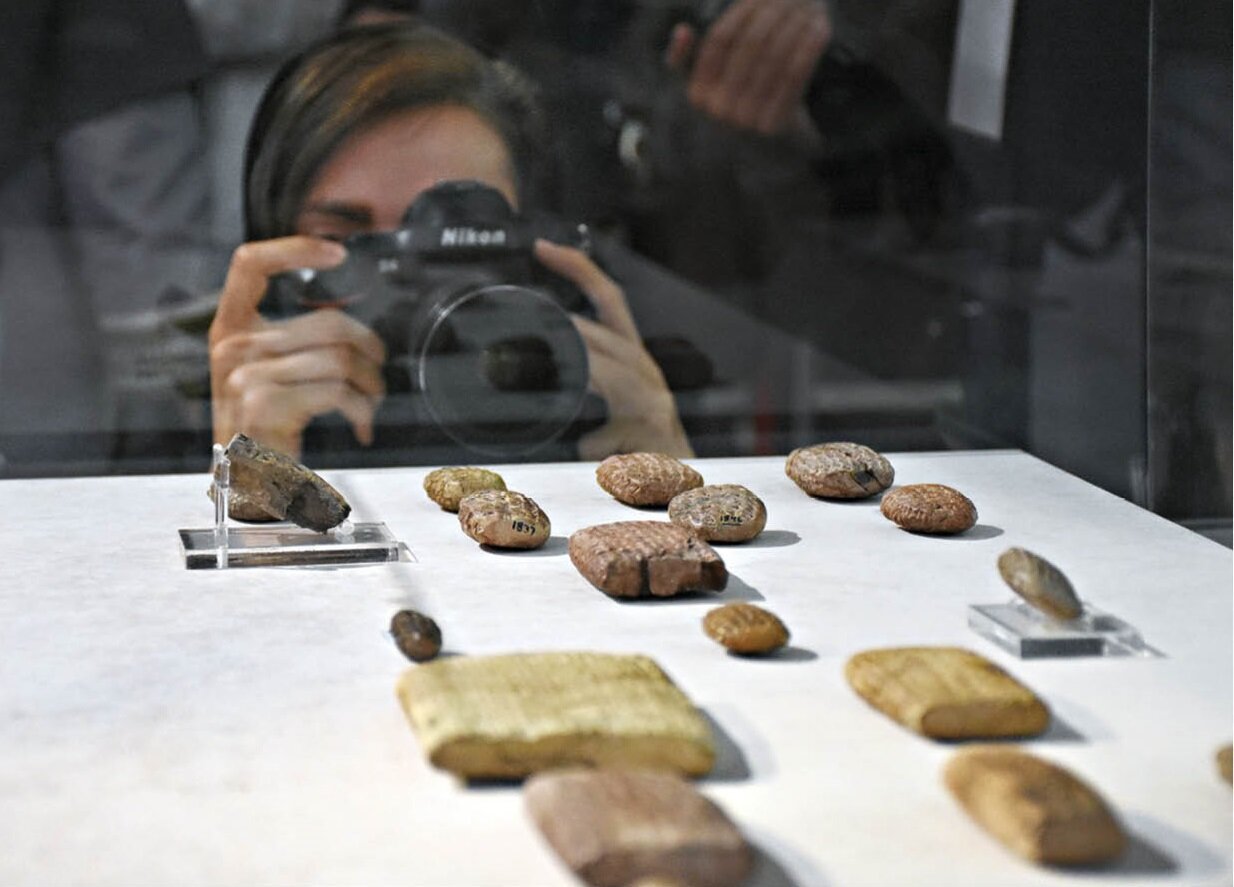National Museum set to host exhibit of recovered Achaemenid tablets

TEHRAN – The National Museum of Iran is getting prepared to host a special exhibition of Achaemenid tablets which were returned home after nearly 90 years.
In a recent announcement, Jebrael Nokandeh, who presides over the prestigious museum, revealed that fresh studies on Achaemenid tablets continue to progress, signaling the imminent staging of an exhibition featuring these historical artifacts at the museum.
An exhibition of Achaemenid tablets will soon take place at the National Museum of Iran, IRIB quoted Nokandeh as saying on Friday.
He emphasized that research on the Achaemenid tablets was still ongoing, shedding light on the significance of these ancient relics, whose latest batch was returned in September by the plane carrying President Ebrahim Raisi after addressing the 78th session of the United Nations General Assembly in New York.
After some 80 decades of being on loan at the University of Chicago, the clay tablets were subject to American researchers' scrutiny for a span of merely 8 to 10 years, he said, referring to the need for further studies on the tablets.
Addressing the potential interruptions faced during those studies, particularly due to events like World War II and the demise of Professor Richard Hallock, a linguist involved in the research, Nokandeh stated that these setbacks somehow affected the overall progress of the studies.
He noted that the studies conducted either found their place in the university's sources or were published in book form, making their content accessible to the public.
The impending exhibition is anticipated to be a celebration of cultural heritage, inviting visitors to delve into the profound legacy of the Achaemenid civilization.
These clay tablets were part of a larger shipment discovered at Persepolis in the Iranian year 1311 (1932), which was entrusted to the Oriental Institute of Chicago for deciphering and study.
Out of over 30,000 pieces held by the Chicago Institute for study and deciphering, five shipments have been returned to Iran in the Iranian years 1327 (1948-49), 1330 (1951-52), 1383 (2004-05), 1398 (2019-2020), and 1402 (2023-24), ISNA reported.
Yet, portions of these tablets still remain at the institute. Ezzatollah Zarghami, the Minister of Cultural Heritage, Tourism, and Handicrafts, had previously mentioned the process of returning the remaining tablets, stating that the groundwork for their return has been laid out. “According to an agreement made by the Americans, our experts will go to that country to verify the remaining tablets, after which they will gradually be returned to Iran.”
Studies conducted thus far on the Achaemenid clay tablets indicate that their content encompasses the administration and upper echelons of society during that historical period.
Archaeologists affiliated with the University of Chicago discovered the tablets in the 1930s while excavating in Persepolis, the ceremonial capital of the Persian Empire. However, the institute has resumed work in collaboration with colleagues in Iran, and the return of the tablets is part of a broadening of contacts between scholars in the two countries, said Gil Stein, director of the Oriental Institute at the University of Chicago.
They are very important sources of information revealing economic, social, and religious data about the Achaemenid Empire (550-330 BC) and the larger Near Eastern region in the fifth century BC.
Persepolis, locally known as Takht-e Jamshid, was the ceremonial capital of the Achaemenid Empire. It ranks among the archaeological sites that have no equivalent, considering its unique architecture, urban planning, construction technology, and art.
Narratives say that Persepolis was burnt by Alexander the Great in 330 BC apparently as revenge against the Persians, because it seems the Persian King Xerxes had burnt the Greek City of Athens around 150 years earlier. It was the largest and most durable empire of its time, stretching from Ethiopia, through Egypt, to Greece, Anatolia (modern Turkey), Central Asia, and India at its height.
AFM
Leave a Comment